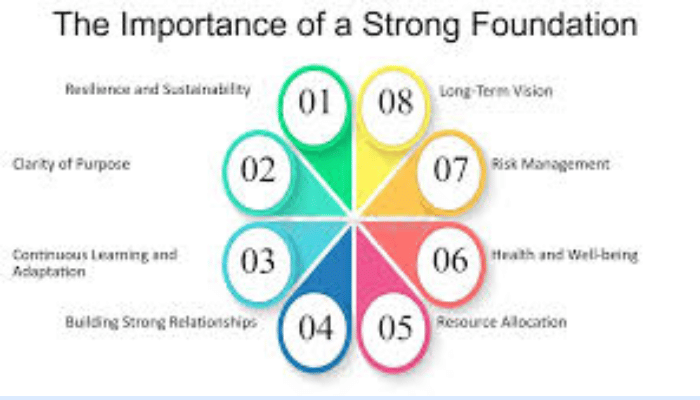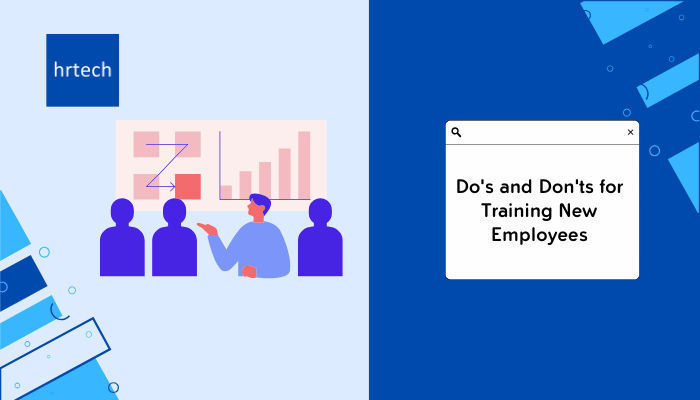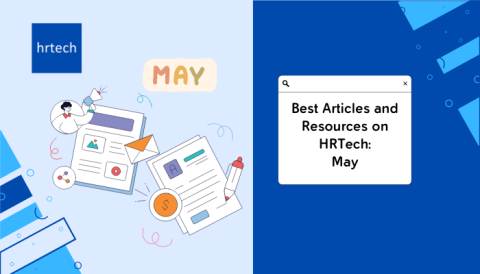Let’s delve deeper into the world of new employee training, also known as onboarding. Onboarding is more than just paperwork and policy explanations. It’s the foundation for a successful and long-lasting employee relationship. Hrtech understands that effective onboarding significantly impacts new hire retention and productivity.
Studies by Glassdoor show that a strong onboarding program can improve new hire retention by as much as 82% within the first year.
Effective training equips new employees with the knowledge, skills, and confidence they need to succeed in their roles. It fosters a sense of belonging and reduces feelings of isolation often experienced during the first few weeks.
Think about it this way:
How productive can you be in a new job if you’re unsure of your responsibilities, company culture, or how to use the necessary tools? Investing in a well-structured training program bridges this gap.
By providing clear expectations, relevant skills development, and a supportive environment, you empower new hires to hit the ground running and become contributing members of the team faster. This, in turn, translates to increased productivity and overall business success.
Gone are the days of generic, one-size-fits-all training programs. Today’s new hires crave a more personalized and immersive onboarding experience. This means tailoring training to specific roles, incorporating a variety of learning methods, and fostering a sense of connection with the company culture.
Let’s move on to the Do’s of Training New Employees. Here, we’ll explore some best practices to create an engaging and effective onboarding program.
Do’s for Training New Employees: Building a Strong Foundation:

1. Establish Clear New Employee Procedures and Training Checklists:
Imagine your first day at a new company. You’re bombarded with information, unsure of what to expect next, and left feeling overwhelmed. This is exactly what you want to avoid during onboarding.
Do: Develop a clear and concise onboarding plan outlining new hires’ steps during their first few weeks or months.
Do: Create checklists for each stage of the onboarding process. This ensures everyone stays on the same page and new hires feel a sense of accomplishment as they complete each task.
2. Include Onboarding Best Practices and Varied Learning Methods:
There’s no single approach that works for everyone. Effective onboarding incorporates a variety of learning methods to cater to different learning styles and preferences.
Ditch the monotonous lectures! Mix things up with engaging activities like:
Interactive workshops
Role-playing exercises
Gamification elements
Case studies
Leverage e-learning modules that provide flexibility and allow new hires to learn independently.
3. Train for Culture and Integrate Company Values into the Training:
Company culture is more than just free lunches and ping-pong tables. It’s the heart and soul of your organization.
Help new hires understand your company culture, values, and mission statement. Explain how their role contributes to the bigger picture.
Integrate real-life examples and stories of how employees embody your company values in their daily work.
4. Use Learning Technology to Provide Comprehensive Training:
Gone are the days of bulky training manuals. Today’s learning management systems (LMS) offer a centralized platform for delivering and managing training materials.
Implement an LMS to provide new hires easy access to training modules, company documents, and resources.
Utilize the LMS for knowledge checks and assessments to gauge understanding and identify areas where additional support may be needed.
5. Customize Training Materials Based on Employee Knowledge Levels:
Not all new hires come with the same level of experience or knowledge.
Conduct a skills assessment during the pre-boarding stage to identify any knowledge gaps.
Tailor training materials to each new hire’s specific needs. This ensures they receive the most relevant information and avoids overwhelming them with unnecessary details.
6. Build a Formal Training Curriculum Including Skills, Product/Service Training:
A well-structured training curriculum ensures a smooth learning journey for new hires.
Develop a comprehensive curriculum that covers essential job skills, product or service knowledge, and company-specific procedures.
Break down complex topics into manageable modules and schedule training sessions accordingly. This allows for better knowledge retention and avoids information overload.
7. Encourage Shadowing and On-the-Job Learning for Practical Experience:
There’s no substitute for hands-on experience.
Facilitate job shadowing opportunities for new hires to observe experienced colleagues performing their tasks.
Incorporate on-the-job training sessions where new hires can apply what they have learned under the guidance of a supervisor or mentor.
Assign a Mentor or Buddy for Additional Support:
A mentor is a trusted guide, providing ongoing support and career development advice.
Match new hires with experienced mentors who can answer questions, offer guidance, and help them navigate the company culture.
Consider implementing a buddy system where new hires are paired with peers for social interaction and informal support.
8. Provide Easy Access to Training Materials and Centralize Resources for Convenience:
Imagine not knowing where to find a crucial document during your first week. Frustrating, right?
Ensure all training materials, resources, and company documents are easily accessible through your LMS or a central repository.
Provide clear instructions on navigating the resource library and finding the necessary information.
9. Promote Good Leaders and Involve Them in the Training Process:
Leaders play a vital role in shaping new employee experiences.
Identify and empower strong leaders within your organization to actively participate in the training process.
Encourage leaders to interact with new hires, answer questions, and provide insights into their specific departments.
10. Start Onboarding Before Day One with Pre-First Day Communication:
The onboarding journey shouldn’t begin on the first day.
Send a welcome email with essential information, company resources, and a warm greeting before the new hire’s first day.
Consider including a short video message from the CEO or department head to personalize the onboarding experience.
We’ve covered several do’s for effective new employee training. Let’s explore common pitfalls to avoid to ensure a smooth and successful onboarding process.
Transforming HR through Agile Workforce Solutions
Don’ts of Training New Employees- Avoiding Common Pitfalls:

While we’ve focused on best practices, it’s equally important to avoid some common mistakes that can derail your onboarding efforts. Here are some don’ts to keep in mind:
1. Don’t Overwhelm New Hires with Too Much Information at Once:
Remember, new hires are like sponges, eager to learn but with limited capacity at the beginning.
Don’t: Subject them to information overload on their first day.
Do: Break down complex topics into manageable chunks and prioritize essential knowledge for the first few weeks.
2. Don’t Rely Solely on Traditional Methods; Incorporate E-learning and Technology:
Traditional lecture-style training can be monotonous and ineffective.
Don’t: Limit training to classroom sessions only.
Do: Integrate e-learning modules, interactive elements, and technology to create a more engaging learning experience.
3. Don’t Refrain from Using Proper Explanations for Technical Jargon:
Technical jargon can be a barrier to understanding, especially for new hires unfamiliar with industry terms.
Don’t: Assume new hires understand complex terminology.
Do: Explain technical jargon in clear, concise language and provide context to solidify understanding.
4. Don’t Ignore the New Hire’s Preferred Learning Method:
People learn in different ways. Some thrive in interactive settings, while others prefer self-paced learning.
- Don’t: Force a one-size-fits-all approach to training.
- Do: Identify the new hire’s preferred learning style and tailor training methods accordingly.
- Don’t Neglect the Importance of a Warm Welcome. A warm welcome sets the tone for the entire onboarding experience.
- Don’t: Leave new hires feeling lost or unsure of who to ask for help on their first day.
- Do: Organize a team lunch or social gathering to help new hires connect with colleagues in a relaxed setting.
- Do: Assign a buddy to show them around the office and introduce them to key people.
5. Don’t Fail to Nurture New Hires’ Interests and Engagement in the Company:
New hires are excited about their new roles and eager to contribute.
Don’t: Make them feel like cogs in the machine, with no room for growth or personal development.
Do: Discuss their career aspirations during the onboarding process.
Do: Outline opportunities for professional development and ongoing learning within the company.
6. Don’t Forget to Provide and Receive Regular Feedback for Training Program Improvement:
Onboarding is an ongoing process, not a one-time event.
Don’t: Assume the training program is perfect and set in stone.
Do: Schedule regular check-ins with new hires to gather feedback on their onboarding experience.
Do: Use this feedback to identify areas for improvement and continuously refine your training program.
We’ve explored several do’s and don’ts of training new employees. Now, let’s delve into the key components you should cover in any effective onboarding program.
Key Components to Cover in Training New Employees:
Now that we’ve established the importance of effective onboarding and explored best practices and pitfalls to avoid let’s delve into the key components you should cover in your training program. Incorporating these elements will equip your new hires with the knowledge, skills, and confidence they need to thrive in their roles.
1. Job Expectations and How the Role Fits Within the Organization:
Clearly outline the new hire’s responsibilities, performance metrics, and day-to-day tasks.
Explain how their individual role contributes to departmental and overall company goals.This fosters a sense of purpose and helps new hires understand the bigger picture.
2. Departmental Goals and Objectives to Align Individual Contributions:
Introduce new hires to the department’s goals, objectives, and key performance indicators (KPIs).
Explain how their individual performance ties back to achieving departmental success.
This fosters a sense of accountability and encourages collaboration within the team.
3. Processes, Workflows, and Key Policies Impacting the Role:
Equip new hires with the knowledge of relevant workflows, policies, and procedures impacting their role.
This could include expense reporting procedures, data security protocols, or communication guidelines.
Understanding these processes ensures efficient work and avoids confusion.
4. Technology and Systems Relevant to the New Hire’s Position:
Provide comprehensive training on the software, tools, and equipment they’ll need to use on a daily basis.
This could include customer relationship management (CRM) systems, project management tools, or industry-specific software.
Ensure they feel comfortable navigating these systems and confident in utilising them effectively.
5. Key Stakeholders, Their Expectations, and Team Dynamics:
Introduce new hires to key stakeholders they’ll interact with regularly, such as team members, managers, and clients.
Explain their roles and expectations, fostering a clear understanding of communication channels and reporting structures.
Briefly touch on team dynamics and company culture to help new hires navigate interpersonal interactions.
6. Performance Management Plans and Metrics for Tracking Productivity:
Familiarize new hires with the performance management process and evaluation criteria used in their role.
Explain how their performance will be measured and provide clear expectations for success.
This transparency fosters a sense of ownership and motivates them to achieve their goals.
By incorporating these key components into your onboarding program, you’ll equip new hires with the foundation they need to excel in their roles and become valuable members of your team.
Methods For Training New Employees:
Equipping your new hires with the right knowledge and skills is crucial, but delivering the training in a way that resonates with them is equally important. Here, we’ll explore various training methods to cater to different learning styles and preferences:
1. Instructor-led Learning for Personalized Guidance:
Instructor-led training sessions provide a platform for in-depth explanations, interactive discussions, and real-time Q&A.
This method is ideal for complex topics requiring personalized guidance and immediate clarification of doubts.
2. E-learning Modules for Flexibility and Scalability:
E-learning modules offer a flexible and scalable approach to training. New hires can learn at their own pace, revisit modules for reinforcement, and access them conveniently from any device.
This method is well-suited for standardized knowledge transfer and introductory topics.
3. On-the-Job Training for Hands-on Experience:
There’s no substitute for practical experience. On-the-job training allows new hires to apply what they have learned in real-world scenarios under the supervision of a mentor or experienced colleague.
This method effectively develops practical skills and builds confidence in performing job tasks.
4. Job Shadowing to Learn from Experienced Colleagues:
Job shadowing allows new hires to observe experienced colleagues performing their tasks and gain insights into daily workflows.
This method fosters a sense of mentorship, provides role models to emulate, and offers valuable behind-the-scenes perspectives.
5. Mentorship for Ongoing Support and Professional Development:
Assigning a mentor provides new hires with a dedicated source of support, guidance, and career advice throughout their onboarding journey and beyond.
Mentors can answer questions, offer feedback, and help new hires navigate company culture and professional development opportunities.
Combining these methods allows you to create a well-rounded training program that caters to diverse learning styles, maximizes knowledge retention, and sets your new hires up for success.
Next, we’ll explore the importance of continuous feedback and program improvement for a truly effective onboarding experience.
Power of Feedback- Ensuring Continuous Improvement in Onboarding Programs:
A well-structured onboarding program doesn’t end after the first few weeks. It’s an ongoing process that requires continuous monitoring and improvement. Here’s how feedback plays a crucial role:
1. Regular Check-ins to Gauge Progress and Address Concerns:
Schedule regular check-ins with new hires throughout their onboarding journey and beyond.
Use these sessions to assess their progress, answer questions, address any concerns, and identify areas where they might need additional support.
Open communication fosters a sense of trust and allows you to address any issues proactively.
2. Gathering Feedback from New Hires to Refine Training Methods:
New hires are valuable sources of insight.
Gather feedback through surveys, one-on-one meetings, or focus groups to understand their experience with the training program.
Ask them about the clarity of materials, the effectiveness of training methods, and any gaps they may have identified.
3. Utilizing Feedback for Ongoing Improvement and Program Evolution:
Don’t let feedback gather dust on a shelf!
Analyze the feedback received and use it to identify areas for improvement in your onboarding program.
This could involve revising training materials, incorporating new methods, or tailoring the program to address specific needs.
Regularly reviewing and updating your program ensures it remains relevant, effective, and responsive to your organization’s ever-evolving needs.
Conclusion:
By prioritizing effective onboarding, you’re investing in the future of your company. A well-structured program equips new hires with the knowledge, skills, and confidence they need to thrive. It fosters a sense of belonging, reduces turnover rates, and fuels long-term success.
Ready to take your onboarding to the next level? Explore hrtech’s vast library of resources and solutions to find the perfect tools to streamline your onboarding process and make a lasting impression on your new hires.





